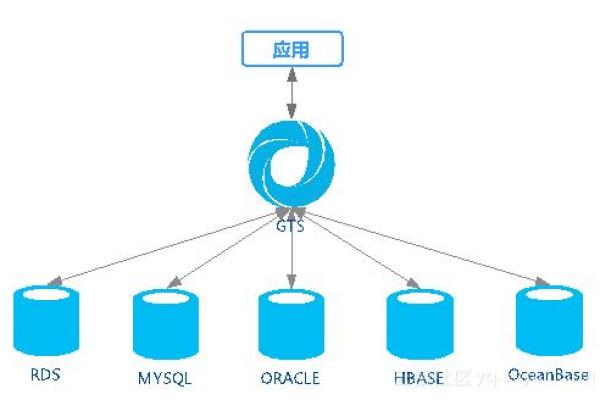c 连接数据库
- 行业动态
- 2025-02-20
- 6
C语言连接数据库的详细指南
在C语言中连接数据库是一个常见的需求,无论是为了存储应用程序数据、读取配置信息还是进行复杂的数据处理,以下将详细介绍如何在C语言中连接不同类型的数据库,包括关系型数据库(如MySQL、PostgreSQL)和非关系型数据库(如MongoDB)。
1. 连接关系型数据库(以MySQL为例)
1.1 安装MySQL开发库
确保你的系统上已经安装了MySQL服务器和开发库,你可以通过包管理器安装这些软件:
Ubuntu/Debian sudo apt-get update sudo apt-get install mysql-server libmysqlclient-dev CentOS/RHEL sudo yum install mysql-server mysql-devel
1.2 编写C代码
下面是一个简单的示例,展示如何使用C语言连接到MySQL数据库并执行查询:
#include <stdio.h>
#include <stdlib.h>
#include <mysql/mysql.h>
int main() {
MYSQL *conn;
MYSQL_RES *res;
MYSQL_ROW row;
// 初始化连接句柄
conn = mysql_init(NULL);
if (conn == NULL) {
fprintf(stderr, "%s
", mysql_error(conn));
exit(1);
}
// 连接到数据库
if (mysql_real_connect(conn, "localhost", "root", "password", "testdb", 0, NULL, 0) == NULL) {
fprintf(stderr, "%s
", mysql_error(conn));
mysql_close(conn);
exit(1);
}
// 执行查询
if (mysql_query(conn, "SELECT id, name FROM users")) {
fprintf(stderr, "%s
", mysql_error(conn));
mysql_close(conn);
exit(1);
}
res = mysql_store_result(conn);
if (res == NULL) {
fprintf(stderr, "%s
", mysql_error(conn));
mysql_close(conn);
exit(1);
}
// 处理结果集
printf("IDtName
");
while ((row = mysql_fetch_row(res)) != NULL) {
printf("%st%s
", row[0], row[1]);
}
// 清理资源
mysql_free_result(res);
mysql_close(conn);
return 0;
}
说明:
mysql_init: 初始化一个新的连接句柄。
mysql_real_connect: 建立到数据库的实际连接。
mysql_query: 执行SQL查询。
mysql_store_result: 获取查询结果。
mysql_fetch_row: 逐行读取结果。
mysql_free_result: 释放结果集内存。
mysql_close: 关闭数据库连接。
2. 连接非关系型数据库(以MongoDB为例)
2.1 安装MongoDB C驱动
安装MongoDB及其C驱动:
Ubuntu/Debian sudo apt-get install mongodb-org mongodb-org-tools mongodb-org-server mongodb-org-shell mongodb-org-mongos sudo apt-get install libmongo-client-dev CentOS/RHEL sudo yum install mongo-org mongo-org-server mongo-org-shell mongo-org-mongos sudo yum install mongo-c-driver-devel
2.2 编写C代码
以下是使用C语言连接到MongoDB并插入数据的示例:
#include <stdio.h>
#include <stdlib.h>
#include <mongoc/mongoc.h>
#include <bson/bson.h>
int main() {
mongoc_client_t *client;
mongoc_collection_t *collection;
bson_t *document;
bson_error_t error;
// 初始化MongoDB客户端
mongoc_init();
client = mongoc_client_new("mongodb://localhost:27017");
if (!client) {
fprintf(stderr, "Failed to create a new MongoDB client
");
return EXIT_FAILURE;
}
// 获取集合句柄
collection = mongoc_client_get_collection(client, "testdb", "users");
if (!collection) {
fprintf(stderr, "Could not get collection handle
");
return EXIT_FAILURE;
}
// 创建文档
document = bson_new();
BSON_APPEND_UTF8(document, "name", "John Doe");
BSON_APPEND_INT32(document, "age", 30);
// 插入文档
if (!mongoc_collection_insert_one(collection, document, NULL, NULL, &error)) {
fprintf(stderr, "Insert failed: %s
", error.message);
return EXIT_FAILURE;
}
// 清理资源
bson_destroy(document);
mongoc_collection_destroy(collection);
mongoc_client_destroy(client);
mongoc_cleanup();
return 0;
}
说明:
mongoc_client_new: 创建一个新的MongoDB客户端实例。
mongoc_client_get_collection: 获取指定数据库和集合的句柄。
bson_new: 创建一个新的BSON文档。
BSON_APPEND_: 向BSON文档添加字段。
mongoc_collection_insert_one: 插入一个文档到集合中。
bson_destroy: 销毁BSON文档。
mongoc_collection_destroy: 销毁集合句柄。
mongoc_client_destroy: 销毁客户端实例。
mongoc_cleanup: 清理MongoDB C驱动的资源。
FAQs
Q1: 如何在C语言中处理数据库连接错误?
A1: 在C语言中处理数据库连接错误通常涉及检查每个数据库操作的返回值,如果操作失败,可以使用相应的错误处理函数(如MySQL的mysql_error或MongoDB的bson_error_t)来获取详细的错误信息,并进行适当的处理(如打印错误消息、重试操作或退出程序)。
Q2: C语言连接数据库时需要注意哪些安全问题?
A2: 连接数据库时需要注意以下几个安全问题:
输入验证: 确保所有用户输入都经过验证,以防止SQL注入或其他类型的攻击。
权限管理: 使用具有最小必要权限的数据库用户,避免使用具有过多权限的用户。
加密通信: 如果可能,使用SSL/TLS加密数据库连接,防止数据在传输过程中被窃听或改动。
错误处理: 妥善处理所有可能的错误情况,避免泄露敏感信息或导致程序崩溃。
定期更新: 确保使用的数据库和相关库都是最新版本,及时修补已知的安全破绽。
小编有话说
通过以上内容,我们了解了如何在C语言中连接不同类型的数据库,并掌握了基本的数据库操作方法,无论是关系型数据库还是非关系型数据库,正确的连接和操作方式都是确保数据安全和程序稳定运行的关键,希望本文能为您在实际开发中提供有用的参考,帮助您更好地掌握C语言与数据库的交互技巧。









